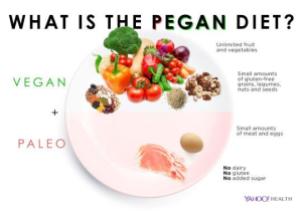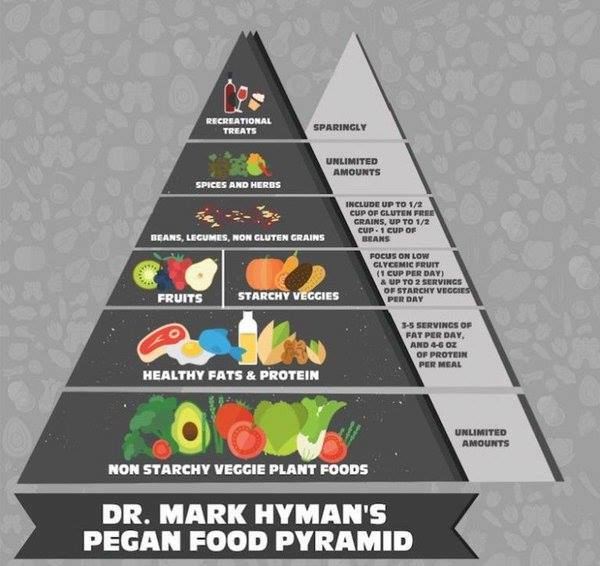I have always had a passion for health and nutrition. I went to school for pre med and ended up switching to nutrition. After school, my interest only increased and I found myself fascinated by how our bodies were made to use food. We can do so much for our health just by changing what we put into our bodies. Our bodies were made to heal themselves! I won’t get on my soap box right now, but if you ever want to discuss more, I would be happy to.
After researching and watching all those lovely Netflix documentaries, I had been torn about following a more Paleo approached diet vs a plant based diet. Honestly, both appeal to me. The science backs them up, it makes sense to me. So, when I heard of the new Pegan Diet, I was intrigued. I tend not to follow a “diet” but more just look to eat the way my body needs, the way I feel best. However, if I had to classify the way I want to eat, it would be Pegan. The Pegan diet is a modified version of the Paleo and Vegan diets and for me, it makes my body very happy.
This post may contain affiliate links. The small amount I may receive helps support my family, so thank you.
A little background for you: The Paleo (or “caveman”) diet, includes foods that our hunter-gatherer ancestors ate: meat, fish, eggs, vegetables, and fruit. Grains, legumes, sugars, processed foods and most dairy products are forbidden. A vegan diet, we know, consists of vegetables, fruits, grains, nuts, and seeds—and prohibits anything that comes from an animal. So, how do we combine them?
According to Mark Hyman, MD, the Pegan diet looks like this:
- Focus on the glycemic load of your diet. This can be done on a vegan or paleo diet, but harder on a vegan diet due to the increase of carbs. Focus on more protein and fats. Nuts (not peanuts), seeds (flax, chia, hemp, sesame, pumpkin), coconut, avocados, sardines, olive oil.
- Eat the right kind of fats. Stay away from most vegetable oils such as canola, sunflower, corn, and especially soybean oil which now comprises about 10 percent of our calories. Focus instead on omega 3 fats, nuts, coconut, avocados and saturated fat from grass fed or sustainably raised animals.
- Eat mostly plants – lots of low glycemic vegetables and fruits. This should be 75 percent of your diet and your plate.
- Focus on nuts and seeds. They are full of protein, minerals, and good fats and they lower the risk of heart disease and diabetes.
- Avoid dairy – it is for growing calves into cows, not for humans. Try goat or sheep products and only as a treat. And always organic.
- Avoid gluten – look for heirloom wheat (Einkorn) if you are not gluten sensitive, consider it an occasional treat.
- Eat gluten-free whole grains sparingly– they still raise blood sugar and can trigger autoimmunity.
- Eat beans sparingly – lentils are best. Stay away from big starchy beans.
- Eat meat or animal products as a condiment, not a main course. Read The Third Plate by Dan Barber to understand how changes in our eating habits could save the environment and ourselves. Vegetables should be at the core of our diet and meat should be a side dish.
- Think of sugar as an occasional treat – in all its various forms (i.e., use occasionally and sparingly).
There are some “rules” you should follow when starting a Pegan diet. I say rules loosely because the most important thing is to listen to your body. I do not believe you need to follow one particular diet, you just need to find a way of eating that is realistic and sustainable long term. You want it to be a lifestyle, not a temporary fix.
Rule 1: Use Meat as a Condiment
Meat contains a number of beneficial vitamins and minerals in addition to a high dose of protein. But it can also carry large amounts of saturated fat, depending on the meat you choose. To reap the benefits of eating meats while avoiding the pitfalls, treat it like a condiment. When adding meat to a meal, try and make it a quarter or less of the total ingredients. Also aim for sustainably raised, grass-fed meat and go lean with poultry or fish when you can.
Rule 2: No More Than a Half Cup of Beans Per Day
Beans are a great source of protein, fiber, and a variety of vitamins and minerals, but they can also cause bloating and digestive troubles for some people. As with meat, the goal is to eat enough to reap the benefits, while avoiding amounts that might cause you problems. Avoid big, starchy beans like lima beans or kidney beans and keep the amount to less than half a cup per day.
Rule 3: Get a Half Cup of Low-Glycemic Grains Per Day
While grains of any sort are banned in the Paleo diet, whole grains can have long-term health benefits. The key is to eat grains that won’t play with your blood sugar that also don’t include gluten. Quinoa, oats and black or wild rice are all good options. Make sure to keep the grain amounts to half a cup per day, which is a serving about the size of a lightbulb.
Rule 4: Start Your Day With Two Whole Eggs
While eggs were long vilified for their high levels of cholesterol, recent research and food guideline changes have put them back on the healthy list. That’s because they contain high levels of healthy fats, vitamins and minerals. They’re also a great source of protein. Eating two whole eggs with breakfast every morning helps to fill you up and give you the nutrients your body needs to take on the day.
Rule 5: Consume Plenty of Healthy Fats
Fat has gotten a bad reputation. Eating healthy fat is not only good for you, it is essential. You’ll notice it says you should consume 3-5 servings of healthy fat each day. I actually tend to have more than this and it has only helped me. Fat is not your enemy, but it needs to be the right kind. If you really want to dive into this idea, I highly recommend Dr. Hyman’s Eat Fat, Get Thin book.
So, there you have it! I will say it again…I am not on a diet and don’t believe you should be either. I found a way of eating that I can continue with and modify as needed. My whole family eats this way and it works. Find what works for you. If you need any help getting started with the Pegan diet or just healthy eating in general, I would be happy to chat with you.








13 Comments
Carrie Willard
February 17, 2017 at 8:23 amThat sounds really interesting and very much like how I eat. I don’t eat sugar at all, small amounts of fruits, small/moderate amounts of whole grains and beans. I eat meats, fats, veggies. No gluten because I’ve tested allergic. Very small amounts of dairy, mostly Greek yogurt.
terryn
February 18, 2017 at 1:09 pmSounds so great, Carrie!
Sarah Jean Althouse
February 17, 2017 at 9:12 amOoh it sounds like I pretty much follow the Pegan diet already (Although may need to up my vegetables to get to that 75%). And I had no idea pre-med and nutrition were in your background. I love that!
terryn
February 18, 2017 at 1:08 pmThanks Sarah! Yeah, I’ve always been into the science/medial type field. I took a bunch of nursing prereq’s too. 🙂
Kristin Cook
February 17, 2017 at 11:16 amHmmm.
What I like: It’s less restrictive than either of the diets on their own. I like that I can still eat meat, but can also eat (limited) grains.
What I don’t like: I really love grains: Brown rice, quinoa, oatmeal, etc. I know that you and a bunch of other people are smarter than me, but I just don’t understand how they are so bad when they have positive effects on me. I’m certainly not saying you are wrong… the grain and dairy concept is just really hard for me even though I’ve had it explained to me :/ I guess I’m just stubborn.
BUT I will say that I could get behind this far more quickly than JUST paleo or JUST vegan. I definitely think it sounds like a good way to do things overall (though I never plan to give up my chemical-laden International Delight creamer or my butter. lol)
terryn
February 18, 2017 at 1:07 pmLol, Kristin. Most people have a problem giving up grains. When you really research it, you’ll find that grains are really not good for your body. Check out the book Wheat Belly. You can still have grains, just minimize them a bit. And I won’t tell you to give up butter…that’s the only dairy thing I eat and I love it!
Amanda
February 17, 2017 at 7:11 pmThis was very interesting. I have Celiac disease so I already have the gluten free part down. Our meat is organic, grass fed (thank you Butcher Box for your great meats) so we have that part down. I don’t think giving up beans and rice will go over too well at my house. My husband is Peruvian. But all in all, it sounds like a very healthy way to eat.
terryn
February 18, 2017 at 1:05 pmAhh, I see how that may be a problem 🙂 Maybe just lessen them a little? Substitute some beans for a veggie?
Nadine Cathleen
February 18, 2017 at 9:54 amInteresting read.. I’m using a few of the same diet rules but had never heard much about this type of diet before. Will read a bit more about as it sounds quite good. Thanks for sharing!
terryn
February 18, 2017 at 1:03 pmYou are welcome, Nadine! It’s funny, there are so many “diets” out there that are really just a natural way of eating. 🙂
LeAnn Rodriguez
February 18, 2017 at 9:48 pmTerryn,
I’ve never heard of this diet, but it makes total sense. I have been trying to eat more aligned with this diet anyway and agree with the idea of using meat as a condiment approach. Going to check out your other posts!
Kirsty
February 20, 2017 at 7:21 amSounds very interesting. There’s a lot to remember and think about though but it’d be worthwhile trying.
Julie
September 14, 2018 at 9:04 amWhat do you typically eat with eggs for breakfast?